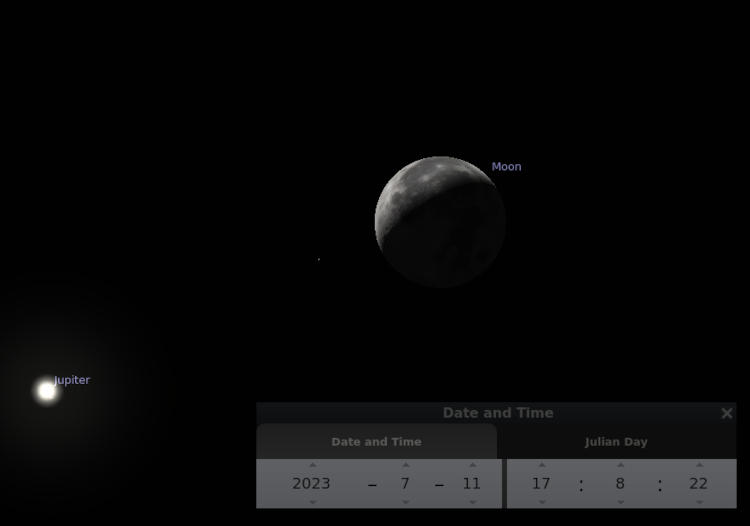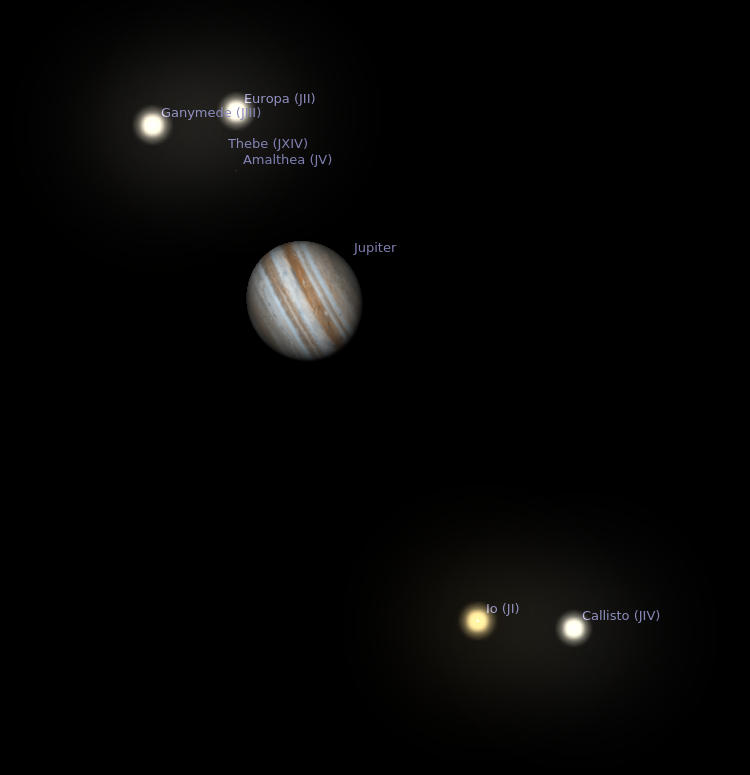I went out briefly very early this morning (like 3 AM) and noticed the crescent moon had a reasonably close companion, but wasn’t inclined to set up for a photo session at that hour. I forgot about it until reminded this afternoon, and took a look at Stellarium to see what the companion was, and what it would look like tonight/early tomorrow morning. Turns out to be Jupiter, which will have switched positions with the moon in regards to the plane of the ecliptic. That means they would pass in the intervening time, so I switched off both the Ground and the Atmosphere options in Stellarium, eliminating both the view of the Earth and any dayglow from the sun scattering from the atmosphere, creating what one would see if floating free in space far from the planet. Then I played around with the Date/Time menu until the moon and Jupiter passed the closest.

That’s 5:08 PM local time, which of course is still broad daylight, but worse, the moon sets at 3:17 PM, about an hour hence as I type this; at present, it’s too close to the horizon for me to see it with all of the trees in my area. Knowing exactly where to look, I might have been able to spot Jupiter against the blue sky. But then I zoomed in on Jupiter’s appearance during this conjunction, and saw this:

That would certainly have been a great thing to capture, but there’s no way in hell to see the moons during the day, except for maybe a total solar eclipse. For years, all I ever saw were the Jovian moons in a straight line with Jupiter, because the orbital patterns of Earth and Jupiter put us mostly along the plane of Jupiter’s ecliptic. But now we’ve moved more and the plane is tilted to our view, so the moons can now shift higher and lower, allowing for something like this. If I were in, like, India at least. Ah well, so much for that.
[At some point I’m sure I can capture a similar pattern from the moons, just not with a conjunction, but I doubt I could get our moon, and Jupiter, and the Jovian moons in the same frame anyway, given the huge difference in light levels, so it could only be a candidate for the Photoshop Picture of the Day, er, Astronomy Picture of the Day. Same thing.]
[ADDENDUM: I just checked, and Jupiter, Venus, Mars, and Saturn will all be in the sky during the total solar eclipse of April 8th, 2024, though the latter two will be fairly close to the horizon. I plan to be within the viewing corridor for that event, so I may be a busy little photographer during the few minutes of totality, with as many cameras in use as I can manage. This could be interesting….]



















































